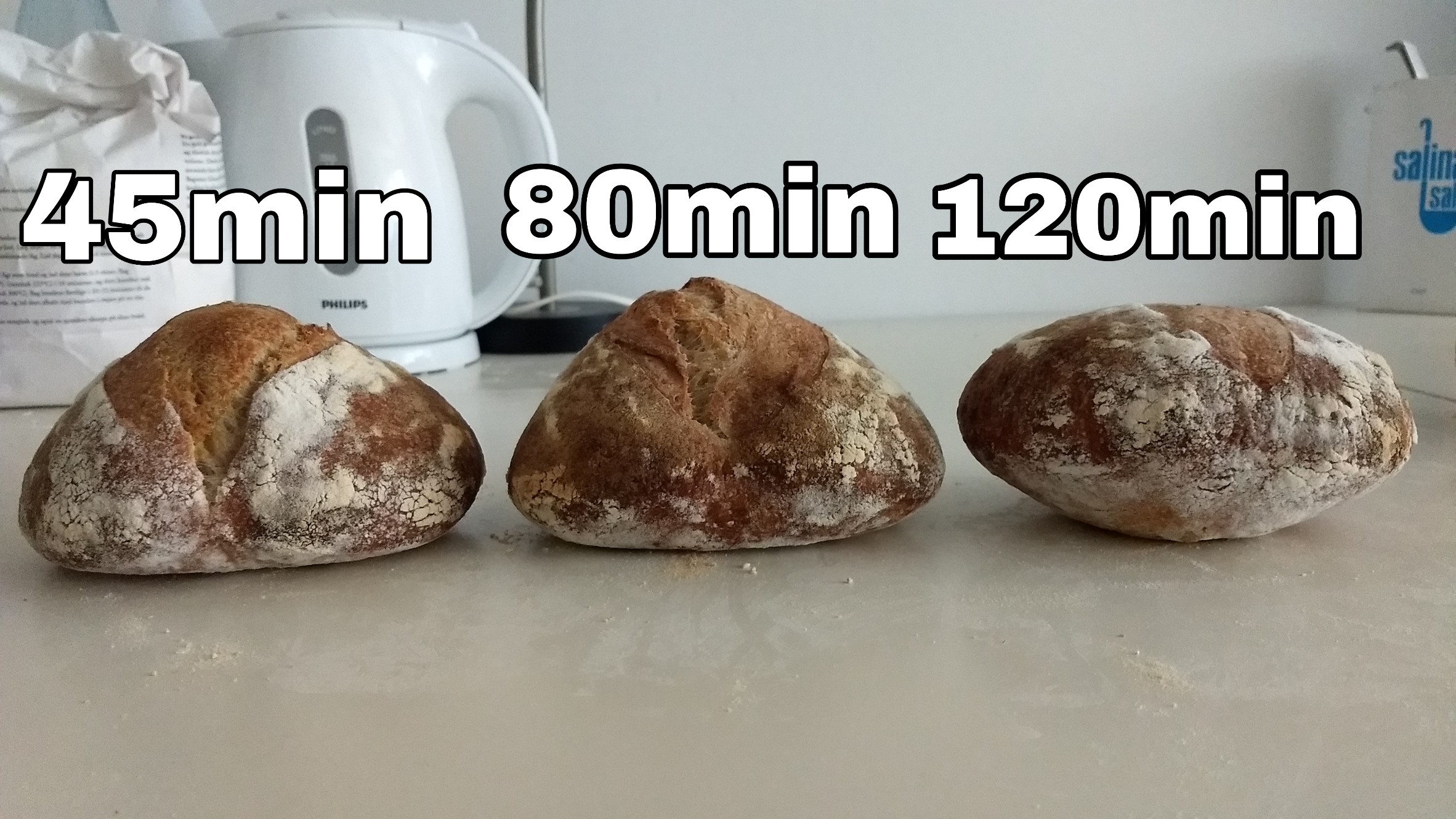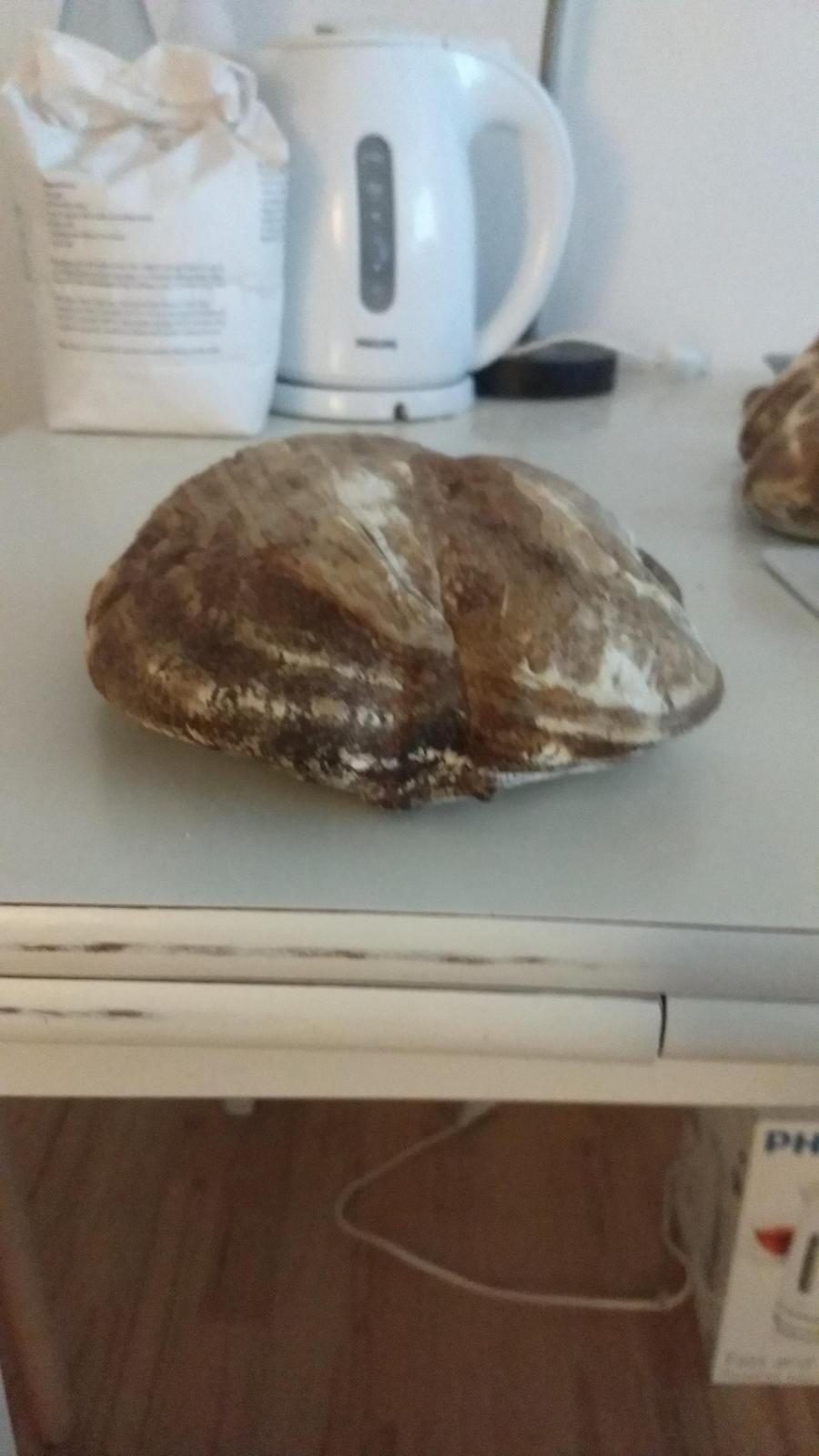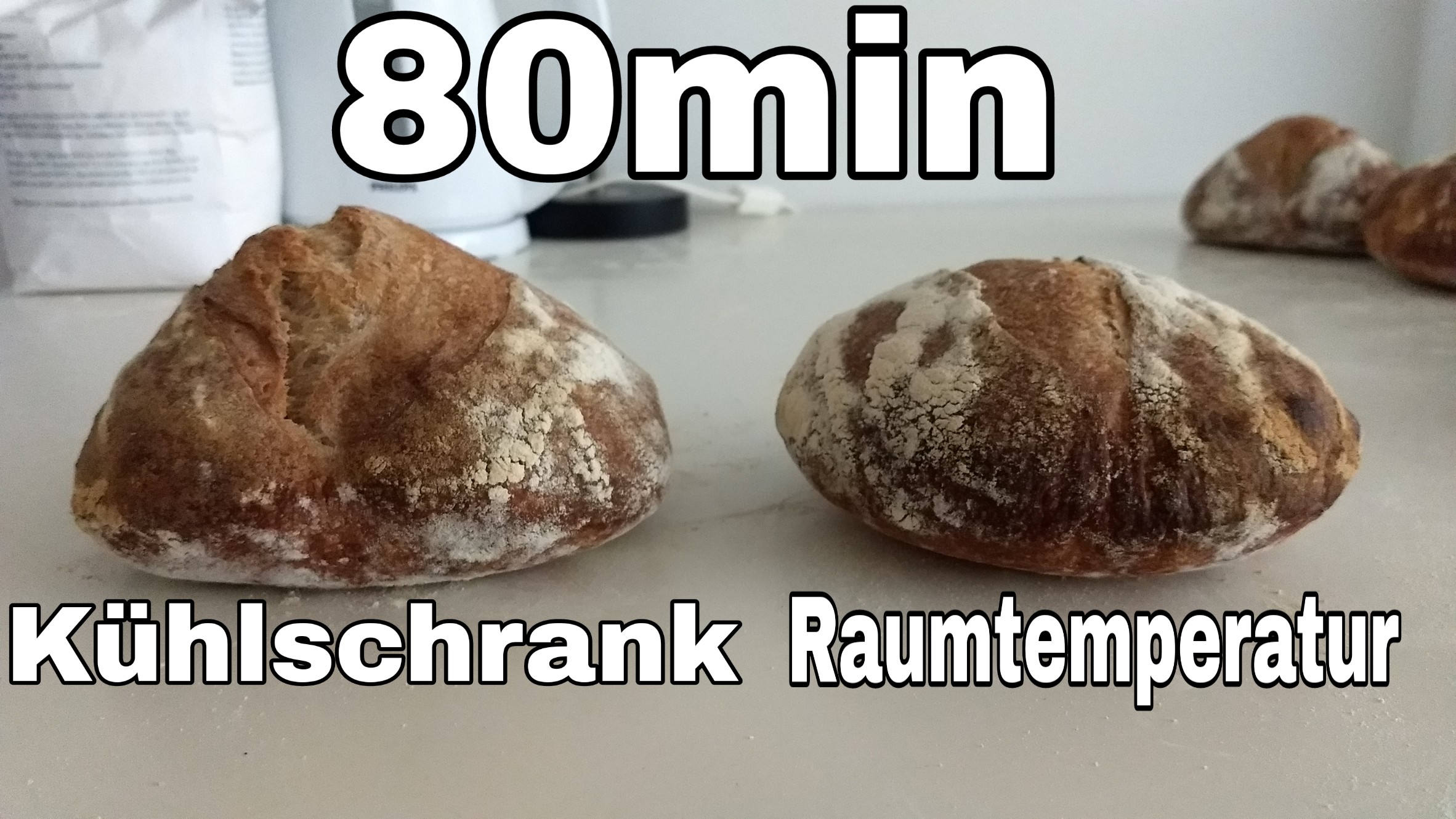
My Sourdough Proofing Experiment

Intro:
Hello,
I am baking sourdough for nearly a year now. My Problem always was, that my breads turn our really flat, although i used the proofing times in the refrigerator from most recipes. But let me become a bit more detailed:
Dough: 900g AP flour 100g Wholegrain wheat flour + 200g 3-4h old levian + 720ml tabwarm water
Processing: Autolyse flour + water for 2h, add salt + leftover water mix and add levian fold/mix to incorporate. Bulk ferment at room temp. with 8 stretch and folds for 4h (every 30mins). Then toss out on the bench and preshape, devide in two. benchresting for 30 mins+ final shape.
Proofing: I used most recommended proofing times in the refrigerator: So around 12-16h.
Baking: Normal baking tray. Preheated oven at 275°C(527°F)for one hour. baking at 230°C(446°F). Loaf on hot tray. Created steam by using spraybottle on the bottom of the hot oven, on the loafs.
The Problem:
Bread came out always flat and didnt opened up, where i scored them. 

I tried to modify my proofing times. I tried to proof at roomtemp for 1 or 2h. But had no real improvements.
The Experiment:
So now to my experiment, because it always seemed like i overprooved my dough.
I made the same dough devided in 6 and prooved them differently (the rest of the procdedure was exactly like the one i normally used see above): For 45mins, 80mins and 120mins. And for each time one in the refrigerator and one at roomtemperature. I baked them directly out of the refrigerator and scored them all the same with one slice down the middle. I wrote the details on the pictures (important: Kühlschrank=Refrigerator, Raumtemperatur=Roomtemperature).
Here are my results:
overview:

Comparison between the loafs from the refrigerator to the ones proofed at roomtemperature:



Comparison between the loafs from the fridge:

Comparison loafs proofed at roomtemperature:

Crumb:
45min fridge loaf:

Crumb loaf proofed at room temp for 45 min:

Now my conclusion:
My sourdough seems to be more active than the ones most people have. Its almost like commercial yeast. I suscpected this already, because it was very hungry. I kept it in the fridge and it almost needed feeding everyday, like the normal roomtemp. sourdough starter.
Shape: The shape only was good for the loafs from the 45/80 loafs from the fridge. Means that i think everything above probably 90mins could get dangerous. The loafs proofed at roomtemperature, all were overproofed. Means that i will have to try really short times like 15-30mins.
Crumb: Didnt really improved for the refrigerated loaf. Maybe was a bit more uniform, but i will try to attach the pics for the other loafs, when i cut them open, if you are interested.
I will also try to bake normal size loaf most likely with a second(shaped) proofing for about 1h. And i want to try a run, where i refridgerate the dough after the stretch and folds over night. And then shape them.
Enough for one post. I will maybe post more pictures of my results :)


I am not clear though on your refrigerator times. Did you actually bake one of those loaves 45 minutes after putting them in the fridge?
Yes i put them in the refrigerator right after shaping them. For 45mins and the i baked them directly from the fridge.
qualify as retardation of the dough. In that time, the dough would just begin to cool down. The internal temp would be closer to room temp than fridge temp. I am not sure what the point of doing that would be aside from not being able to bake the loaves all at once and needing to slow some of them down.
What was your purpose in doing such a short time in the fridge?
I apologize if I am coming across as pretty blunt... I can be blunt (hopefully not being rude) but I am actually curious as to your intent. ?
No its all good :) i actually like to get more input on those things.
My idea on that was, that i might try out shorter times, cause i really struggled on the long retardation times. And what is most important, that you have to keep in mind, that i used very small loafes in this experiment. Meaning, that the 300g dough will most likely cool down way faster than a normal one.
But you are right. I might have to try it with bigger loafes to get impactfull results.
only 300 g of dough! I can see now why the heat hit them so fast. I think you got great loaves considering their size!
Jeah this was only a tryout. I made my usual amount of dough (so around 1800g) and wanted to have the highest number of tries, so i made 6 different ones. I really have to make more normal sized loafes to determine my results.
Next tryout will be with a longer bulk ferment (so after the folds i will refrigerate the dough overnight), then shape it and proof it for 1h. I am just curious, if i am getting a more open crumb then. Oh and i will just go for a normal sized loaf (so around 900g).
Your non fridge loafs look very different than the refrigerated ones. I have two main questions. What temps are you bulking at? Your bulk time/temp is as, if not more, important than your final refrigerated/non-refrigerated proof times. And, have you tried calibrating your oven temp? Because it looks to me like the loafs are getting heat shocked (bulging out from both sides; plus the crazy crumb, but that could be due to other things), whereas the refrigerated ones because going in cooler are not as 'shocked'. What is happening is the heat is so high that the crust if forming BEFORE the internal gases have time to expand the gluten (this could also due to lack of humidity, both in the dough and in the cooking environment). Also, please try cooking in a Dutch Oven. I'm not kidding you, once I started doing this, I got immediately favorable results. I tried the steam thing for years, and depending on the oven (I have a GE gas) it just doesn't work! The people on the internet who do manage to make this work, I suspect, have electric ovens which are NOT vented like gas ones are (for safety!) and are able to actually build some steam pressure in their oven. Anyway..buy a Dutch Oven, I like the lodge combo cooker for boules and small batards (have to reduce the Tartine recipe) but have hadhad decent results with a covered enamel roasting pan.
The other thing too is that I have NOT had good results with sourdough using mostly all-purpose flour, the fermentation breaks down the gluten too fast, please try using mostly bread flour or high protein and small percentages of other types, such as spelt, rye, or whole grain that will help feed the yeasts and give a robust feed, and a touch of flavor.
Okay at first thanks for all the input. Really appreciate it.
My bulking temperature is about 22°C(71°F). I am not very sure about that, because i didnt measure them, but it should be something around this.
Then now to the humitdity problem. I actually tried a dutch oven and had pretty good results with it, but im right now in a foreign country for only a short period of time, so i wasnt able to get a grip on one of those.
To the "shocking" point: Just to make it clear. You say it could be a better crumb, because the internal temperature isnt rising that fast in the refrigerated doughs? Because shocking usually means for me, getting things from a low temperature into a high temperature(or the other way around), to shock them. So it would be more apperent in the refrigerated doughs. I will try to keep that in mind then. And maybe try preheating at lower temps. But the most important point is, that i am getting a dutch oven as soon as i am home. I am really thinking about the lodge, but i am open to more suggestions if you have any.
To the flour thing: I am actually searching for a good flour right now (but i already used a hight protein AP flour) and im doing more attemps with one i recently found. I will try to keep you informed on that regard.
'Shocking' is not the best word, you're right. I should point out I haven't done all the methodical experimenting you've done, I am not a professional or profess to be an expert, but I've had very similar results, and have spent a lot of time and dough eliminating some of these very same issues, and I've had a lot issues over my baking experience, many of which I'm still trying to adjust.
That is why what I think is happening is the crust is cooking, starting to carmelize, and becoming non-flexible before the internal crumb has gelatinized and fully expanded (this is evident in the bulging and big hole in top, the gases have no where left to go the starch hasn't gelatinized full so can't hold them. The gases are blowing through the gluten network, reaching the crust and staying there. The room temp dough has just enough of a head start, to help compensate. Just a guess, but obviously something is happening between the two and the only variable is dough temp going in the oven, I assume. I also didn't realize these were rather smaller loaves, but I would think that would actually help since the surface area to volume ratio is lower allowing the internal temp to rise a bit quicker than would happen with a larger loaf. Personally, I like a 850-900 gr loaf (as boule or batard) the best and it is somewhat standard.
Another thing you can try, is lower hydration and cooler over temps. Without the Dutch Oven, start at 205-230C and even spray some water on the loaf, slash really well, and see what happens. Also try a loaf pan and lower temps ~205C.